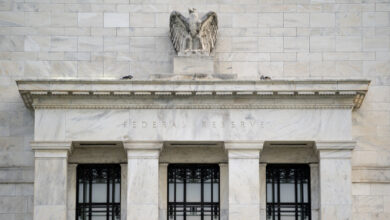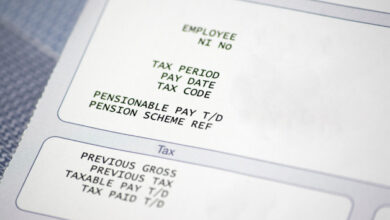Interest rates could be high for much longer. Here's what it means for your finances


(NEW YORK) — For months, the Federal Reserve has forecasted interest rate cuts that would deliver much-needed relief for Americans burdened by high mortgage and credit card loans.
At a press conference this week, however, Fed Chair Jerome Powell cast doubt on whether those rate cuts would arrive after all, saying the Fed needs to “gain greater confidence” that inflation is headed toward an acceptable level.
The prospect of high interest rates for a longer period of time could exacerbate the financial pain already imposed by elevated borrowing costs, making loans expensive even as consumers still weather elevated prices, experts told ABC News.
Americans with savings accounts and other cash funds will continue to benefit from solid returns, though they tend to be well-off people, the experts added.
“Everyday people are suffering the most,” James Cox, a financial adviser and managing partner of Virginia-based Harris Financial Group, told ABC News. “Not only are the high interest rates gobbling up their excess income but inflation is really killing them on everyday items.”
The Fed decided to hold its benchmark interest rate steady at a meeting on Wednesday, citing a lack of recent progress in price increases. Inflation has fallen significantly from a peak of 9.1% but it remains more than a percentage point higher than the Fed’s target rate of 2%.
Since last July, the Fed Funds rate has stood between 5.25% and 5.5%, matching its highest level in more than two decades.
Over that period, borrowing costs have risen for everything — from credit cards to student loans to mortgages.
By the end of 2023, Americans held more than $1 trillion in credit card debt, which marked a record high, according to a report released by the Federal Reserve Bank of New York in February.
As high interest rates persist, credit card borrowers risk ballooning costs, Jason Taylor, an economics professor at Central Michigan University, told ABC News.
As of Wednesday, average credit card interest rates stood at a staggering 20.6%, Bankrate data showed.
“Having interest rates higher for a longer period of time is going to hurt people who have a lot of credit card debt,” Taylor said.
In similar fashion, mortgage rates are likely to remain costly, posing difficulty for prospective homebuyers who’ve faced elevated loan costs for two years.
The 30-year fixed-rate mortgage averaged 7.22% over the week ending on Thursday, matching the highest level since November, Freddie Mac data showed.
When the Fed imposed its first rate hike of the current series in March 2022, the average 30-year fixed mortgage stood at just 3.85%, according to Freddie Mac data.
“It’s very difficult for a first-time homebuyer to get into a property,” Cox said. “It’s very difficult to build the American dream.”
Some people, however, would benefit from a prolonged period of high interest rates.
The rates directly benefit savers, who stand to gain from an uptick in the interest yielded by accounts held at banks. Well-off and older Americans tend to hold a larger share of their assets in savings or other cash funds.
Some high-yield savings accounts are offering interest rates of more than 5%, which far exceeds the inflation rate of 3.5%, NerdWallet data shows.
“Money is appearing out of nowhere with no risk, which just adds to your wealth,” Cox said.
He added, “Interest is like energy — there’s an equal and opposite reaction. If you’re a borrower, the effect is horrible; if you’re a saver, the effect is fantastic.”
Copyright © 2024, ABC Audio. All rights reserved.






